
I just completed shooting the Hooftober event at Bit of Hope Ranch. This was a complex event, in part because I was asked to shoot both stills and video. It also required shooting a reader’s theater on stage, as well as numerous spooky attractions along the miles of trails at the ranch. Because the theme was the Legend of Sleepy Hollow, almost everything needed to be shot in the dark.
About Bit Of Hope Ranch
Bit of Hope Ranch is a horse therapy organization which is aimed at helping “at risk” children and teens. The ranch’s mission statement is “Reach, Rescue and Restore broken children, families and horses through programs that build mind, body and spirit.” As the statement implies, in addition to helping children, the ranch’s volunteers are heavily involved in rescuing abused and neglected animals. The non-profit organization, which is located in Gaston County, is celebrating it’s fifth year of operation.
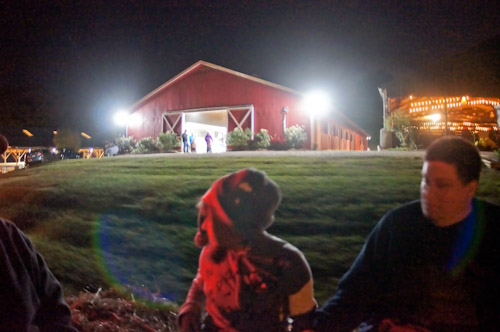
Capturing the Hooftober Story
As I was tasked with capturing both video and still images, I used multiple cameras. Most of the stills were shot with my trusty Sony A350. I used a flash and bracket to capture some of the images, but to enhance the spooky nature of the event, I used a monopod, which allowed me to grab some interesting time exposures.
My primary video recording rig was a Sony NEX 5N. Because the NEX 5N has better high ISO performance than the A350, I also used the mirrorless camera for some still images. One of the drawbacks to the 5N i that it lacks a eye-level viewfinder. In this case, with almost all of all of the shooting happening after dark, there was no problem focusing and composing on the NEX-5N’s big LCD screen. Because I was shooting video and long exposures, the NEX-5N spent the entire event bolted to a tripod.
I also brought along the Zoom H1 audio recorder, which allowed me to capture audio to be used in videos and slide shows.
Of course, in any assignment of this nature, it is crucial to have back up items. In my case, a back up flash unit proved crucial, as my main flash developed a problem and was unusable. Without a backup, I would have been in trouble.
I also needed a number of memory cards and extra batteries. The NEX 5N can use either SD cards or Sony Memory Sticks. I filled up my SD Memory and had to rely on a old Memory Stick from the past. Thankfully, it worked well and gave me an extra 4GB of storage for video files.
Shooting in the Dark
I have considerable experience shooting in the dark. Back when I was a full-time magazine photographer, I covered numerous SCCS Pro Rallies, including several running of the famous Press on Regardless in Michigan’s Upper Peninsula. It takes special techniques to bring back usable images from the north woods at 3AM while you are miles away from any city. Those same techniques helped me collect some nice photos from the Hooftober event
My suggestions for shooting an event like Hooftober (or your local Halloween events) involve:
- Fast Glass: This is a no brainer. You don’t want to be shooting after dark with a slow lens. I used my 50mm f/1.7 on the A350 (A mount). This proved fast enough for most of the shots, although I could have used something even faster along the trail. For the NEX 5N, I started out with the 18-55mm “kit lens” which has a variable maximum aperture of f/3.5-f/5.6. I replaced that lens with my old Rokkor 16mm f/2.8, mated to a Minolta MC MD Lens Mount Adapter. This combination had two advantages. First the maximum aperture was nearly 1 stop faster at 2.8. Secondly, the 16mm focal lens provided really great depth of field, eliminating the need to manually focus in the dark. I just kept the focus ring at infinity and trusted depth of field to keep everything in focus.
- Tripod: I already mentioned I used a tripod and monopod to let me shoot long exposures without introducing camera movement. The tripod also can be used as a impromptu stabilizer. I simply clamped the tripod between my arm and my side. It was not as steady as a true stabilizer, of course, but I got some nice, steady digital footage with this technique.
- Monopod: A monopod is faster to setup and more flexible to use than a tripod. There are times when a tripod is a better option, but for shooting quickly and steadily, the monopod can’t be beat.
- Limited use of Flash: I had flash units for both cameras, but I tried to avoid flash as much as possible. I’ve talked about shooting Halloween photos with flash before. Flash can turn a spooky, erie scene into just another snapshot. Flash can be great for portraits, sports, corporate events and normal parties, but for Halloween shots, less is definitely more. Of course there were situations where flash was mandatory, because in the woods, there was simply no light available. Whenever possible, however I kept the flash shut off.
- High ISO: To minimize flash when shooting in dim light, you have to use a high ISO, even with fast lenses. Ordinarily, I prefer to keep the ISO as low as possible, but shooting monsters and goblins in a dark wooded area calls for desperate measures. I pushed the Alpha A350 up to 800 ISO when in the woods. This is about as high as I am comfortable with this camera. Any higher and the noise becomes unacceptable. The NEX 5N offers much better high ISO performance, so I shot at 1600, 3200 and even at 6400 at times. Yes, there will be some noise at these settings, but considering the subject matter I think the noise is satisfactory.
I shot some stills with the 5N, because I was comfortable with the high ISO performance. The ISO was even more critical for my video work, since I was working without a video light. In very dim light, the image in the view finder often looked great, but as soon as I pressed the video button, the image would turn dark and muddy. That was my cue to push up the ISO for video, as the camera could capture stills at a lower ISO than video.
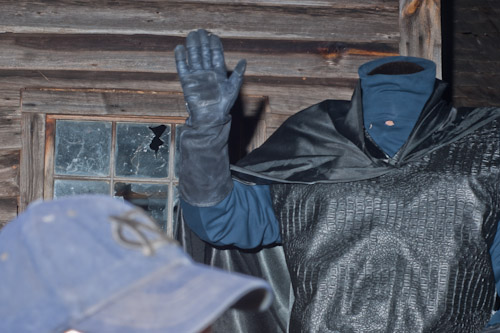
Traveling Light
One of the things I learned in this type of shooting is to travel light. I am not referring to the weight of my camera equipment. I have found it is all too easy to lose things while you are flaiing around in the dark woods at night. To that end, I take only essential items and leave any unnecessary stuff behind.
- No Lens Caps: I usually use lens caps when I am not shooting, and I am usually never seen without a lens hood. In dense darkness, however, a lens hood isn’t really helpful and lens caps are easily dislodged by branches and vines in the dark. I probably walked several miles tracing the route through the trails. I am happy to say I did not lose anything; in part because I jettisoned everything I did not need before setting out.
- Don’t forget a Flashlight: My big Maglite proved to be as important as my camera equipment. It would be all to easy to blunder off the trail and get lost in the woods. In addition, I used the Maglite’s beam to paint light on some of my subjects. This was particularly effective with video work, as you can see the beam moving through the darkness, suddenly bringing something hidden in to view.
- No camera bag: In the spirit of traveling light, I left my camera bag in my truck. I didn’t want the bag and belts catching on limbs and branches. It also would take up space on the hay wagon, so I left it behind. I had no intention of changing lenses along the trail, so I carried the NEX 5N on it’s tripod, and used the A350 with a monopod. The second night, I left the monopod home and used the A350 with a 4000AF flash ands bracket.
- A place for everything: With no camera bag, I needed to be sure I was prepared. I stuffed extra batteries for camera and flash in my pockets. I strapped my Case Logic memory card holder to my belt, ensuring I had extra memory, as well as place to safely store cards I had filled with images. Another advantage to hauling the Maglight on the trail; I had light to change cards and batteries. Finally, the Zoom H1 recorder is small enough to fit in another pocket.
- Keeping track of memory cards: It is always important to take care of your memory cards, but this situation made the task more difficult. Working in dense darkness, juggling Compact Flash cards for the Sony A350, along with SD and Memory Sticks for the NEX 5N, I needed to take extra care to properly manage my memory cards. I ensured that I stored my filled cards in a different place than my blank memory.
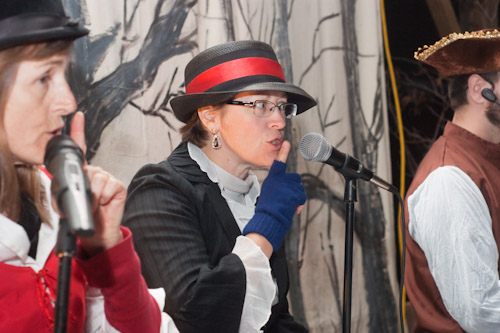
After the Event:
The same concern for memory cards applies to uploading everything to my computer. The following day I made sure everything was safely uploaded and backed up. This involved uploading Compact Flash, SD Cards, Memory Sticks and a micro SD memory card from the Zoom H1 recorder. I was careful to organize my stills, video and audio where I could find everything. Some of the files had the same file name, which presents the danger of one file overwriting another. I was careful to download each card to it’s own folder, eliminating the risk of overwriting another file.
The final step is to prepare everything for the next shoot.
This involved
- Recharging all batteries
- Cleaning and checking all my gear
- Returning all items to proper place
You may may not be shooting in the deep woods, but my experiences at Hooftober can apply to any Halloween party — or even simply shooting the trick and treaters that appear at your front door.

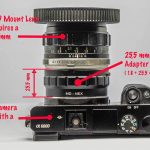
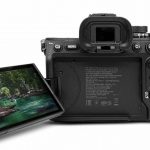
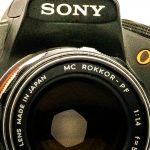
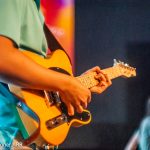

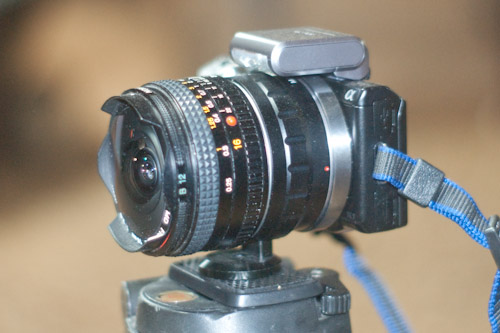
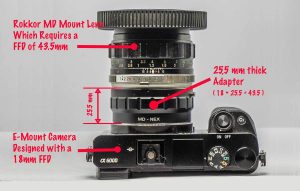

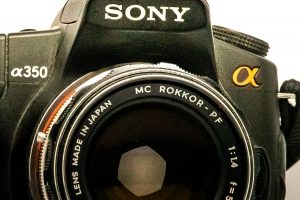
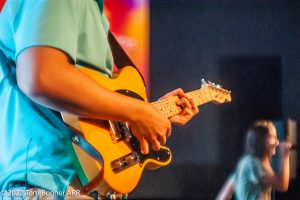
More Stories
Lenses: How to tell an A-Mount and Rokkor Lens Apart
Want great floral photos? Try a conservatory
A foggy Christmas at the Billy Graham Library